Tuesday, April 7, 2015
Microsoft’s New Surface 3 Hybrid Tablet: It’s a Terrific Value
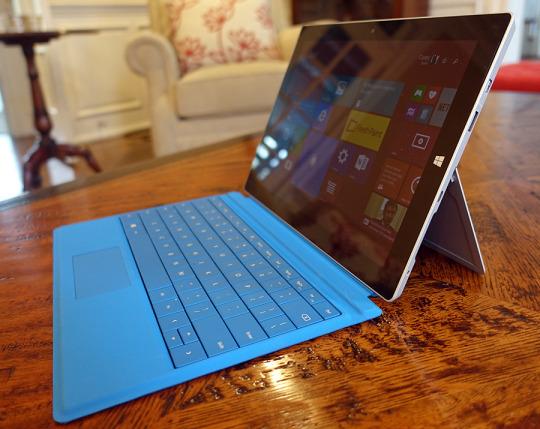
When Apple unveiled the iPad — but before it went on sale — the tech press pretty much pronounced it dead on arrival. “My god, am I underwhelmed,” wrote Gizmodo. “An abysmal failure,” said the Orange County Web Design blog. “Consumers seem genuinely baffled by why they might need it,” pronounced Businessweek. Even our own Rafe Needleman, then at CNET, predicted the failure of tablets in general (he went on to become a tablet junkie).
What they all missed, of course, was a fun fact about human nature: When people are mobile, they don’t care that they don’t have all the horsepower of a PC. They’re content to read, listen, watch, browse. A much-lighter-weight computer is perfectly fine when you’re away from the desk.
But now, as smartphones get bigger and more powerful, tablet sales are slowing. So the computer industry is searching for the next big hit — and it’s keeping the portability lesson in mind. Take, for example, Microsoft’s new Surface 3.
The Surface concept
The idea sounds pretty great. The Surface 3 is a tablet with a hinged panel on the back that flips out to become a kickstand, propping the whole thing up. Throw in the Type Cover — a wafer-thin, felt-lined cover with a full keyboard and trackpad on the inside — and you’ve got yourself a reasonable facsimile of a traditional laptop. With a touchscreen.

Let’s just admit it: It’s really fun to conclude a work session by collapsing the whole thing with one hand into a handy slab to shove into your bag.
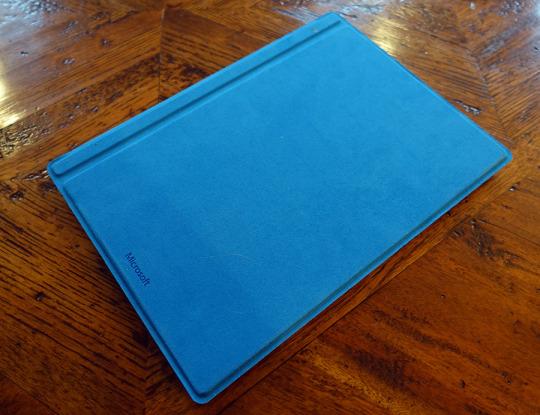
Until now, there have always been two versions of the Surface. There is the Pro version, which runs real Windows: the desktop, the taskbar, and any of the 4 million Windows programs (Quicken, Photoshop, iTunes, and so on).
And there was the original and cheaper model, the Surface RT, which could not run Windows programs — only iPad-like tablet apps, of which there weren’t very many. A middle-schooler could have told you that the RT would flop, and it did.
This week, Microsoft quietly introduced the successor to the RT and the similar Surface 2, simply called the Surface 3. It’s a smaller, lighter, thinner, slower version of the Surface Pro 3, which Microsoft introduced last year — and, with a $500 price tag, much less expensive. (Here’s my review of the Pro 3. Might be worth a skim.)
To keep the price down, Microsoft made a few changes. The screen is 10.8 inches diagonal instead of 12.
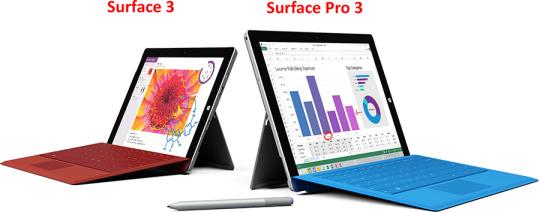
The processor inside is the new Intel Atom x7, which isn’t as fast as the i3, i5, or i7 chip inside the Pro or almost any other laptop. The primary penalty you’ll pay is the time it takes to open programs. It takes a long time: with some, 10 seconds or more.
Once you’re in them, though, you don’t notice much speed difference. Word, PowerPoint, Excel, Netflix, OneNote, Maps, Skype — all of them run smoothly. Just don’t think you’re going to be doing much gaming and 3D modeling on this puppy.
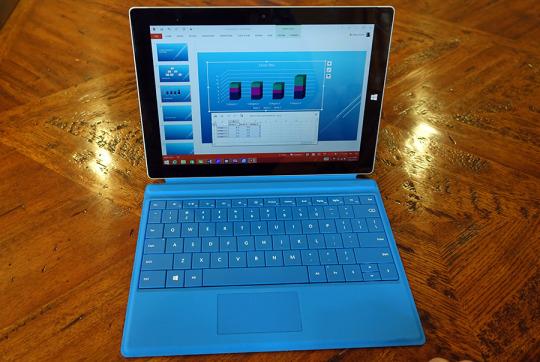
Sadly, the Surface’s power brick no longer harbors a second USB jack for charging your phone or something else, as the Pro’s does. And the new Surface’s kickstand snaps to your choice of three angles, rather than being infinitely adjustable.
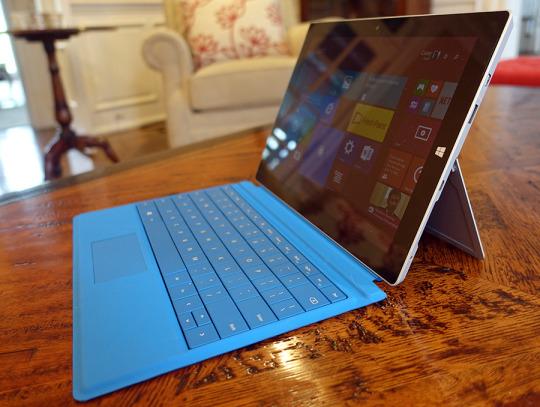
On the other hand, in some ways, the new Surface is better than the Pro. For one thing, the 1.8-pound Pro can be unwieldy to hold in one hand for a long time. At 1.4 pounds, the new model is much more handy.
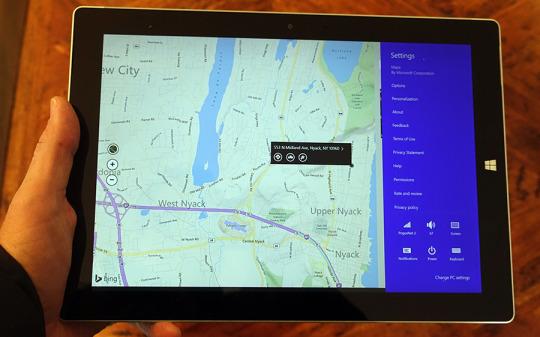
You could argue that the cameras are better, too — 8 megapixels on the back with autofocus, 3.5 megapixels on the front (the Pro has the same 5-megapixel camera on the front and back).
The Surface gets 10-hour battery life instead of 9. And its power cord connects with a micro USB jack, the same one that charges up non-Apple phones and tablets. That means you can now use the same charging cord for your “laptop” and your other devices. You could make the Surface a parasite and charge it from the USB jack of another computer, if you wanted to, although it charges much faster from a wall outlet.
(Online wags have already discovered, with some amusement, that you can actually charge the Surface from itself, by plugging one end of the power cord into the Surface’s own USB jack. Something tells me that despite the “charging” indicator that appears, you’re not actually defying the laws of chemistry and physics.)
You can also buy this Surface model with a cellular modem, so that you can get online anywhere — a truly wonderful option, and one that’s not available on the Pro or on any Apple laptop (although you can get it on iPads). That feature adds $100 to the price, and of course you’ll have to pay for your data. (So far, Verizon and T-Mobile have signed on to offer the Surface; other carriers may be coming.)
And as a further gesture of goodwill to the Surface’s target market — students, families, corporate minions — Microsoft throws in a year of Office 365 Personal, which gives you 1 terabyte of storage online and access to the full Word, Excel, PowerPoint, and Outlook programs.
The Surface and Surface Pro models both include a full-sized USB jack, a Mini DisplayPort jack for connecting a monitor or projector, and a MicroSD memory-card reader. Into that slot you can insert memory cards up to 128 gigabytes, which can act as an “external hard drive” for more space. (The Surface comes with 64 or 128 gigabytes of built-in storage, in the $500 and $600 models, respectively.)
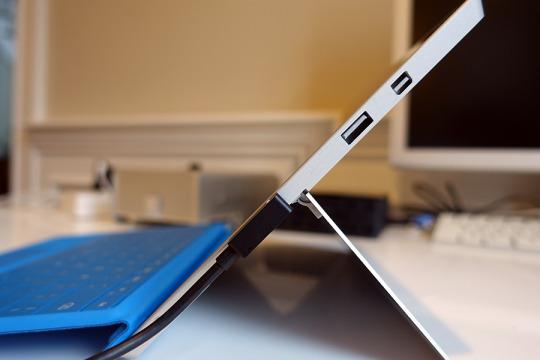
The extras
That Type Cover thing is pretty much a must-have; without it, you’re missing most of the magic of the Surface concept. It’s $130.
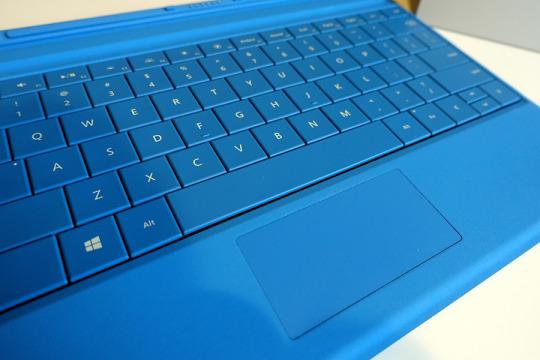
The typing feel itself is excellent — the keys have nice, clicky travel — but the keys are smaller than normal, and the trackpad response is iffier than on a real laptop. That doesn’t seem to stop Surface fans from merrily typing away — I’ve started seeing Surfaces on airplane tray tables — but you’ve been warned.
The $50 Surface Pen is also worth considering. It’s a pressure-sensitive stylus that lets you draw or write on the touchscreen, even if you’re resting your palm on the glass. If you click the pen’s top button, you wake a sleeping Surface directly to a blank OneNote note-taking document. That’s handy when you want to jot something down in a hurry, like a song lyric or product sketch that’s just occurred to you.
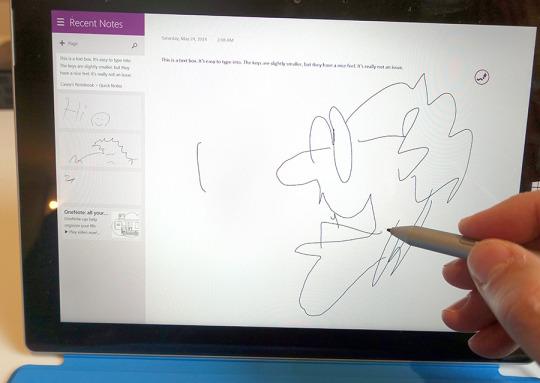
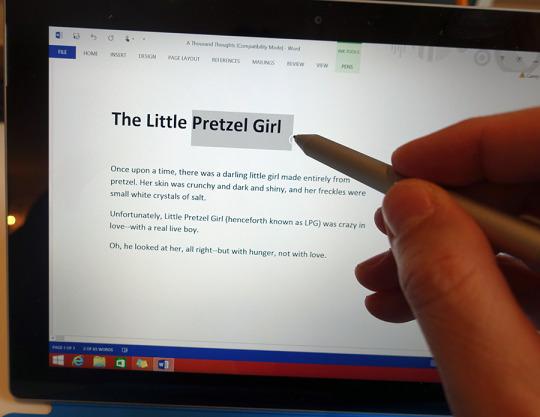
Finally, $200 can buy you a desktop docking station. When you’re done being mobile, you can snap the Surface into this dock, which you leave connected to mouse, keyboard, hard drives, big screen, and so on. (It has four USB jacks — two USB 3.0 and two USB 2.0 — plus an Ethernet jack, video output, an audio in/out jack, and a security lock slot.) It’s black plastic, and the docking itself is a fussy manual process, but it does the job.
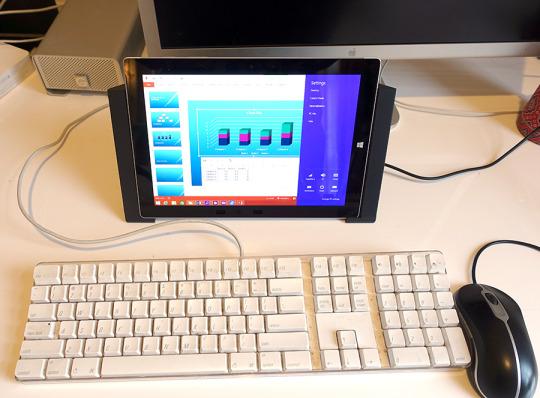
Under the Surface
The Surface isn’t for everyone. If you don’t think you’ll be using it as a tablet, you’ll get more storage and power for the money by buying a straight-up touchscreen laptop.
But the value of this machine is eye-popping, especially when you compare it with the iPad. The $500 you pay to Microsoft gets you a 64-gigabyte tablet with a USB port and memory-expansion slot; the same money paid to Apple gets you a 16-gigabyte tablet with no ports or slots. The Surface can run any of 4 million Windows programs (and, by the way, also the Chrome OS and Chrome apps); the iPad can run 725,000 iPad-optimized apps, plus about a million enlarged phone apps.
There are footnotes to that analysis, of course. An iPad makes you part of Apple’s rather spectacular ecosystem of products and services, weighs 30 percent less than the Surface, and never needs antivirus software. And the iPad’s software is infinitely less complicated than Windows — especially the Franken-OS that is Windows 8.1. Fortunately, if you buy a Surface, you’ll be able to upgrade to the much better Windows 10 this summer, no charge.
But think about it: They’ve managed to pack a full-blown Windows PC into a tablet. If we’d seen this 10 years ago, we would have fallen down and worshiped it as a god.
Microsoft’s hardware divisions have been firing on all cylinders lately. The non-Pro Surface is another winner and deserves to become a hit.
Subscribe to:
Post Comments
(
Atom
)
No comments :
Post a Comment